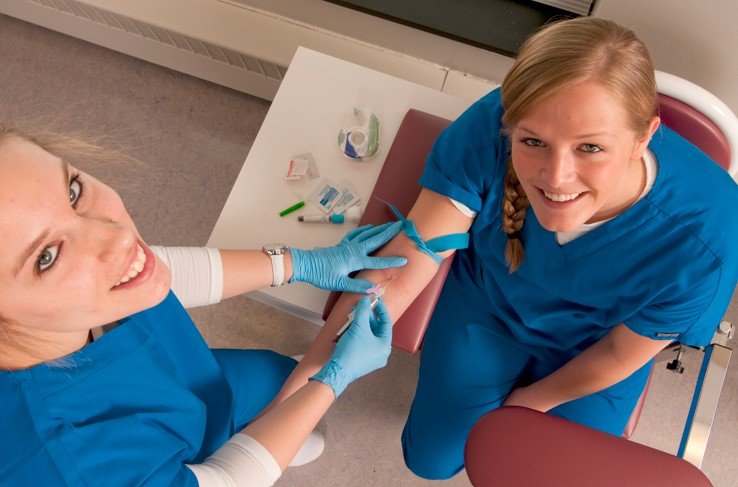Advancements in Hospital Supply and Equipment Management: Key Highlights from USCAP Annual Meeting
Summary
- Hospital supply and equipment management is a critical aspect of healthcare operations in the United States
- The latest advancements in this field were showcased at the USCAP Annual Meeting
- These advancements have the potential to improve efficiency, reduce costs, and enhance patient care in hospitals
Hospital supply and equipment management play a crucial role in ensuring the smooth and efficient functioning of healthcare facilities in the United States. From ensuring the availability of essential medical supplies to optimizing equipment utilization, effective management practices can have a significant impact on patient care outcomes and operational costs.
The Importance of Hospital Supply and Equipment Management
Proper management of hospital supplies and equipment is essential for the following reasons:
- Ensuring the availability of essential supplies and equipment when needed
- Optimizing inventory levels to reduce waste and costs
- Enhancing patient safety by ensuring that equipment is well-maintained and functioning properly
- Improving operational efficiency by streamlining procurement and distribution processes
The Latest Advancements Showcased at the USCAP Annual Meeting
The USCAP Annual Meeting is a key event where healthcare professionals and industry experts gather to discuss the latest advancements in pathology and laboratory medicine. In recent years, there has been a growing focus on innovations in hospital supply and equipment management showcased at the conference. Some of the key advancements include:
1. Automation and Artificial Intelligence
One of the most significant advancements in hospital supply and equipment management is the adoption of automation and Artificial Intelligence technology. These technologies have the potential to revolutionize inventory management processes, enabling hospitals to track supplies in real-time, automate reordering processes, and optimize storage and distribution practices.
2. Data Analytics and Predictive Modeling
Another key trend in hospital supply and equipment management is the use of data analytics and predictive modeling to forecast demand, identify trends, and optimize resource allocation. By leveraging advanced analytics tools, hospitals can make data-driven decisions that lead to more efficient Supply Chain management and cost savings.
3. RFID and IoT Technologies
RFID (Radio-Frequency Identification) and IoT (Internet of Things) technologies are increasingly being used in hospitals to track supplies and equipment in real-time. These technologies enable healthcare facilities to improve inventory accuracy, reduce stockouts, and enhance visibility across the Supply Chain.
Implications of These Advancements
The latest advancements in hospital supply and equipment management have several implications for healthcare facilities in the United States:
- Improved Efficiency: Automation and Artificial Intelligence technologies can streamline Supply Chain processes, reduce manual errors, and improve overall efficiency in hospital operations.
- Cost Savings: By leveraging data analytics and predictive modeling, hospitals can optimize inventory levels, reduce waste, and lower procurement costs.
- Enhanced Patient Care: The adoption of RFID and IoT technologies can enhance patient safety by ensuring that essential supplies are readily available and equipment is well-maintained.
In conclusion, the advancements showcased at the USCAP Annual Meeting represent a significant step forward in hospital supply and equipment management. By embracing these innovations, healthcare facilities in the United States can improve operational efficiency, reduce costs, and ultimately enhance the quality of patient care.

Disclaimer: The content provided on this blog is for informational purposes only, reflecting the personal opinions and insights of the author(s) on the topics. The information provided should not be used for diagnosing or treating a health problem or disease, and those seeking personal medical advice should consult with a licensed physician. Always seek the advice of your doctor or other qualified health provider regarding a medical condition. Never disregard professional medical advice or delay in seeking it because of something you have read on this website. If you think you may have a medical emergency, call 911 or go to the nearest emergency room immediately. No physician-patient relationship is created by this web site or its use. No contributors to this web site make any representations, express or implied, with respect to the information provided herein or to its use. While we strive to share accurate and up-to-date information, we cannot guarantee the completeness, reliability, or accuracy of the content. The blog may also include links to external websites and resources for the convenience of our readers. Please note that linking to other sites does not imply endorsement of their content, practices, or services by us. Readers should use their discretion and judgment while exploring any external links and resources mentioned on this blog.
